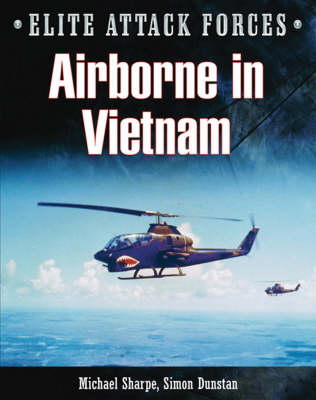Although the helicopter was used in assault operations in Korea, at Suez, and in Algeria, the concept of helicopter-borne airmobility was not fully realised until the US involvement in Southeast Asia. There, two US Army units were at the forefront of bold and imaginative heli-borne assault operations: 1st Air Cavalry (the `First Team') and 101st Airborne (the `Screaming Eagles'), whose combat action, weapons and equipment, and tactics are analysed in incredible detail in this highly illustrated book.
On 1 July 1965 the 1st Cavalry Division (Airmobile) was activated and ordered to Vietnam. In less than a month the division-16,000 men and 434 helicopters-was prepared to enter combat. Within ninety days of becoming the US Army's first airmobile division, the`First Team' was in combat. On 10 October 1965, in Operation `Shiny Bayonet', the First Team initiated its first brigade-size airmobile action against the enemy. The division would go on to take part in many more air assaults and play a leading role in defence against the Tet Offensive, driving out the NVA and Viet Cong invaders from Hue and, in Operation `Pegasus', relieving the 3,500 US Marines and 2,100 ARVN soldiers besieged by nearly 20,000 enemy at Khe Sanh. First into Cambodia in May 1970, a year later the division's colours returned to Fort Hood.
After World War II the first real action the 101st saw was in July 1965 when the 1st Brigade of the`Screaming Eagles' was blooded in the Song Con Valley, Vietnam. It acted as a rapid reaction force, reinforcing American and South Vietnamese forces when necessary, becoming expert in rapid helicopter assaults. The 2nd and 3rd Brigades arrived in December 1967 in time to take part in the reaction to the North Vietnamese Tet Offensive. The 101st and the 1st Cavalry were sent in to recapture Hue in a battle that raged for three weeks and was the only extended urban combat of the war. Following Tet the 101st saw continuous combat including fighting on Hill 937-`Hamburger Hill'-which was some of the most brutal of the war. The last Army division to leave South Vietnam, the 101st spent almost seven years in combat.
- ISBN10 190557391X
- ISBN13 9781905573912
- Publish Date 1 March 2008
- Publish Status Transferred
- Out of Print 4 August 2008
- Publish Country GB
- Imprint Compendium Publishing
- Format Hardcover
- Pages 192
- Language English
